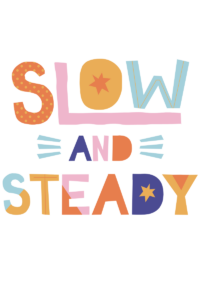Classroom set-up tips from blogs and Pinterest boards usually give you ways to make your classroom cute, warm, and inviting. Those are all great, but the tips written here are what you REALLY need to have a great math environment. Depth > cute
Here are some suggestions for what should be in every math classroom. This is intended for all grades.
Math Practices
The description and visual should be somewhere in your room. Math Practices show what mathematicians do, their actions. Students need to interact with these practices. When I was being coached many moons ago, the coach mentioned that during my closure routine students could reflect and decide on which math practice they worked on that day. That worked great, and I even carried that out when I became a coach. The beginning of the year is a great time to provide lessons on what each math practice might look like. I recommend the book Putting The Practices Into Action to get some lesson ideas.

Growth Mindset
This is the idea that everyone can learn. This message is not isolated to math. Students need reminders of this DAILY. Put some visuals up to remind them when they are feeling insecure. Try to refer to it during your instruction. It builds a habit not only for the students but for the teacher as well. There are some classes on YouCubed.com if you want to learn more about growth mindset. There are also many children’s books. I like Everyone Can Learn Math.

Manipulatives
Math tools should be out and about. You learn by doing. Kids need to touch it, see it, move it. When we lock our manipulatives or math tools in a cabinet, we’re also locking away the students’ ability to explore, create, etc. The same goes for when a teacher dictates what a manipulative should specifically be used for. We have taken away student choice and reasoning. MP.5 states use appropriate tools strategically. Manipulatives could be ANYTHING and do not have to be restricted to a specific grade level. If little bears could be used for Kinder, they could also be used in higher grades to represent fractions of a set.

Math Talk/ Accountable Talk Posters
Asking students to talk about math concepts and problem-solving helps them deepen their understanding. You have to establish a culture where students genuinely listen to each other. We can’t expect students to already have this routine from years prior. We have to develop this routine in our own classrooms.

Math Surveys and Questionnaires
Do you want to know what I complain about the most that is often not happening in schools? Culturally relevant teaching. Let me say it louder for the people in the back. YOU HAVE TO GET TO KNOW YOUR STUDENTS! I understand that people have a set curriculum to teach. But our packaged curriculums most likely are not culturally relevant. You have to adapt/modify the content. Surveys and questionnaires at the beginning of the year help you get to know your students and their world.

Word Wall
Word walls should be student-generated. I don’t know about you, but have you noticed much interaction between students and premade word walls.
On that note, it’s also best not to plaster walls with unnecessary posters such as Keyword or C.U.B.E.S. (Read more at R.I.P Keywords)

Class List Without The Deficit Model
As we’re making cute class lists and labels take a second to look at the list objectively. Shut down the idea of labeling students. No more, “this student is low.” No more low expectations for your ENL, Special Ed, poor, or ethnic students. Shut down implicit bias. Implicit bias refers to the attitudes or stereotypes that affect our understanding, actions, and decisions unconsciously. It’s time to address this. Please don’t limit your instruction to low level and/or basic skills. Research shows your attitude directly affects student achievement. To learn more read Culturally Responsive Teaching And The Brain.

Numeracy Routines
Is there a place where the kids can gather around?
Set aside time in your schedule for numeracy routines. Routines provide students an opportunity to take risks. They learn from each other by discovering and discussing new strategies. Routines help build flexible thinkers and better problem solvers. Do you want students to develop a stronger number sense? Then they need to experience routines frequently. My first year as a math coach, my goal was to get routines in every classroom.

Rich Tasks
Start your year with a bang. Typically the school year starts with some sort of review to see where students are at. The problem with this is we tend to give them basic low-level questions to see what they can do. Why not give them rich tasks instead? In this blog, Rich Tasks, What’s The Big Deal? I state what types of problem I’ve used to start the year, so students know what they’re in for. Set a vision of high-quality mathematics during the first days of instruction. Make tasks accessible to all learners. Let them explore, practice, and make connections.
Students need to understand the power of mistakes and struggle. And that mistakes are opportunities for learning. This is a great message to practice week one.

Real Talk- What Is The Point Of Math?

Math is not an isolated subject or block “covered” throughout the day. Math is not a boring set of numbers or rules. Unfortunately many students especially as they get older view Math this way.
You’ll hear many adults say they don’t really need math. Math is everywhere! Math is in Science phenomenons. Math is in Shakespeare’s literature. Math is in historical events. Math is in Art and Music. Math is used for computers. Math is in sports. The list goes on. This is an important message that needs to be explored with students. The list above was actually created by my son and I. I asked him to give me examples of where he sees math in the world, and that is what he listed. It was easy for him to spew it out because we talk about math daily not as an isolated subject.
If this list is a little overwhelming, try a couple of these out this year then build on from there.
Having these things out and about also helps with parents. Parents come in during open house and/or conferences and see what your message is about. This can help open up a dialogue and build relationships with the same goals in mind. Isn’t that just better than a “cute” room?
Want to check out more?
MEMBERSHIP SITE:
https://zennedmath.com/online-courses/
FACEBOOK GROUP: Zenned Math Teachers
https://www.facebook.com/groups/zennedmathteachers/
YOUTUBE CHANNEL: Zenned Math
https://www.youtube.com/channel/UC5njH_5LoK6G67BvZecGfnw?
WANT ME IN YOUR INBOX? Sign up for my newsletter
https://view.flodesk.com/pages/5efc876dcaabca0028b95eb5
DISCLAIMER: Some links included in this blog might be affiliate links. If you purchase a product or service with the links that I provide, I may receive a small commission. There is no additional charge to you!

